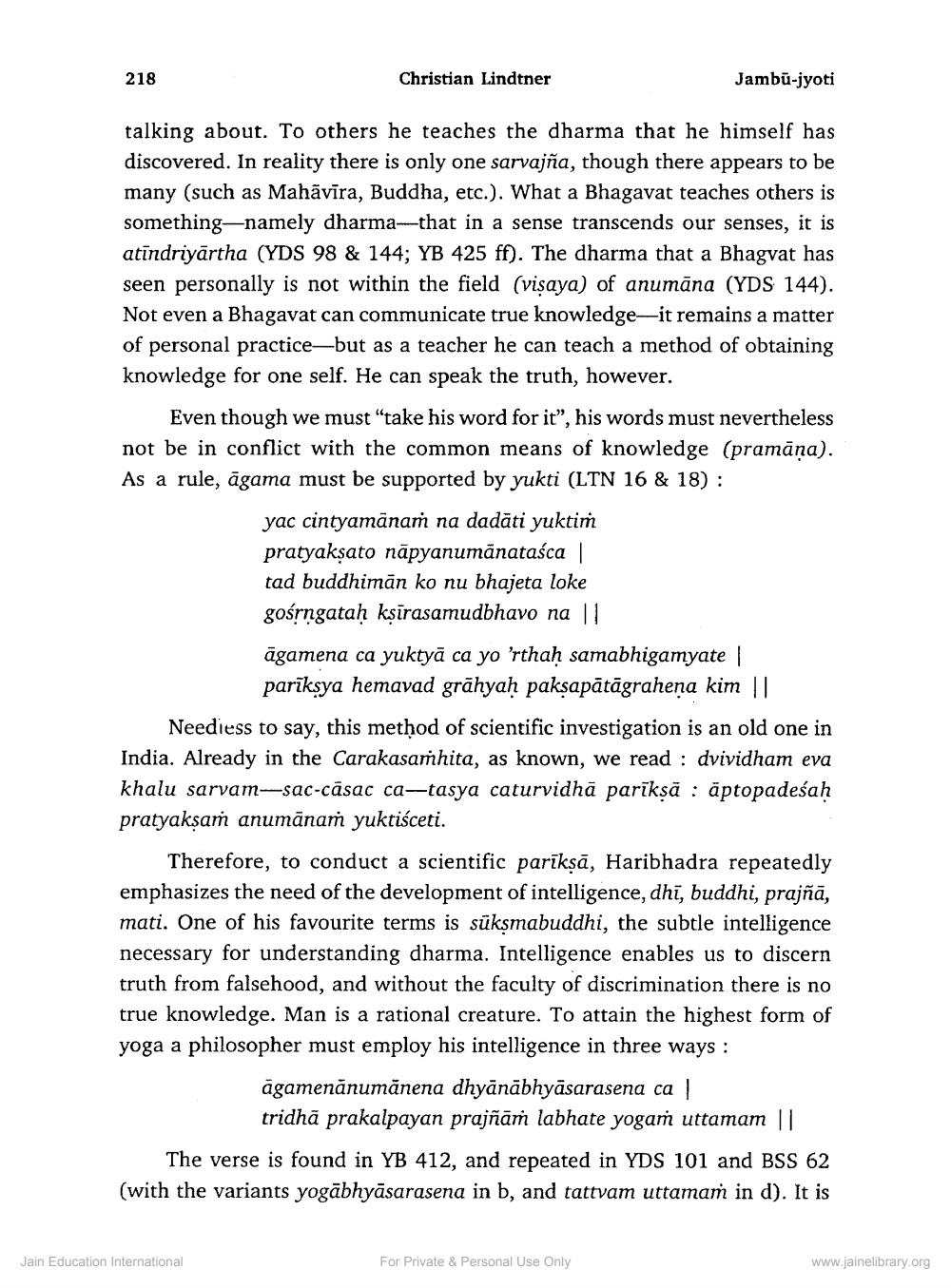________________
218
Christian Lindtner
Jambū-jyoti
talking about. To others he teaches the dharma that he himself has discovered. In reality there is only one sarvajña, though there appears to be many (such as Mahāvīra, Buddha, etc.). What a Bhagavat teaches others is something-namely dharma--that in a sense transcends our senses, it is atīndriyārtha (YDS 98 & 144; YB 425 ff). The dharma that a Bhagvat has seen personally is not within the field (visaya) of anumāna (YDS 144). Not even a Bhagavat can communicate true knowledge—it remains a matter of personal practice—but as a teacher he can teach a method of obtaining knowledge for one self. He can speak the truth, however.
Even though we must "take his word for it", his words must nevertheless not be in conflict with the common means of knowledge (pramāna). As a rule, āgama must be supported by yukti (LTN 16 & 18) :
yac cintyamānam na dadāti yuktim pratyaksato nāpyanumānataśca | tad buddhiman ko nu bhajeta loke gośrngatah ksīrasamudbhavo na ||
āgamena ca yuktyā ca yo 'rthaḥ samabhigamyate | parīksya hemavad grāhyah paksapātāgrahena kim ||
Neediess to say, this method of scientific investigation is an old one in India. Already in the Carakasashita, as known, we read : dvividham eva khalu sarvam-sac-cāsac ca-tasya caturvidhā parīksā : aptopadeśah pratyakşam anumānam yuktiśceti.
Therefore, to conduct a scientific parīksā, Haribhadra repeatedly emphasizes the need of the development of intelligence, dhi, buddhi, prajñā, mati. One of his favourite terms is sūksmabuddhi, the subtle intelligence necessary for understanding dharma. Intelligence enables us to discern truth from falsehood, and without the faculty of discrimination there is no true knowledge. Man is a rational creature. To attain the highest form of yoga a philosopher must employ his intelligence in three ways :
agamenănumănena dhyānābhyāsarasena ca tridhā prakalpayan prajñām labhate yogam uttamam ||
The verse is found in YB 412, and repeated in YDS 101 and BSS 62 (with the variants yogābhyāsarasena in b, and tattvam uttamam in d). It is
Jain Education International
For Private & Personal Use Only
www.jainelibrary.org




